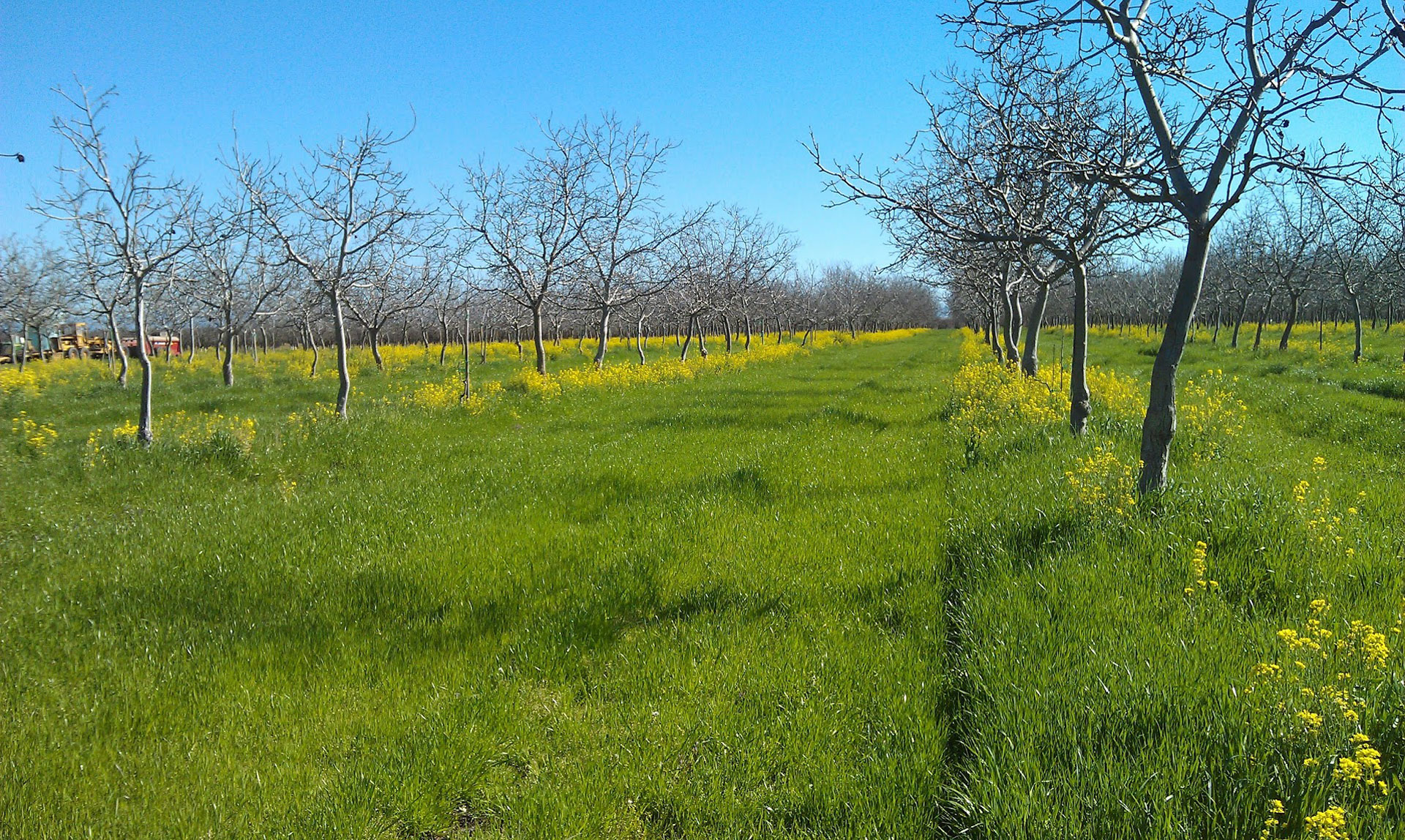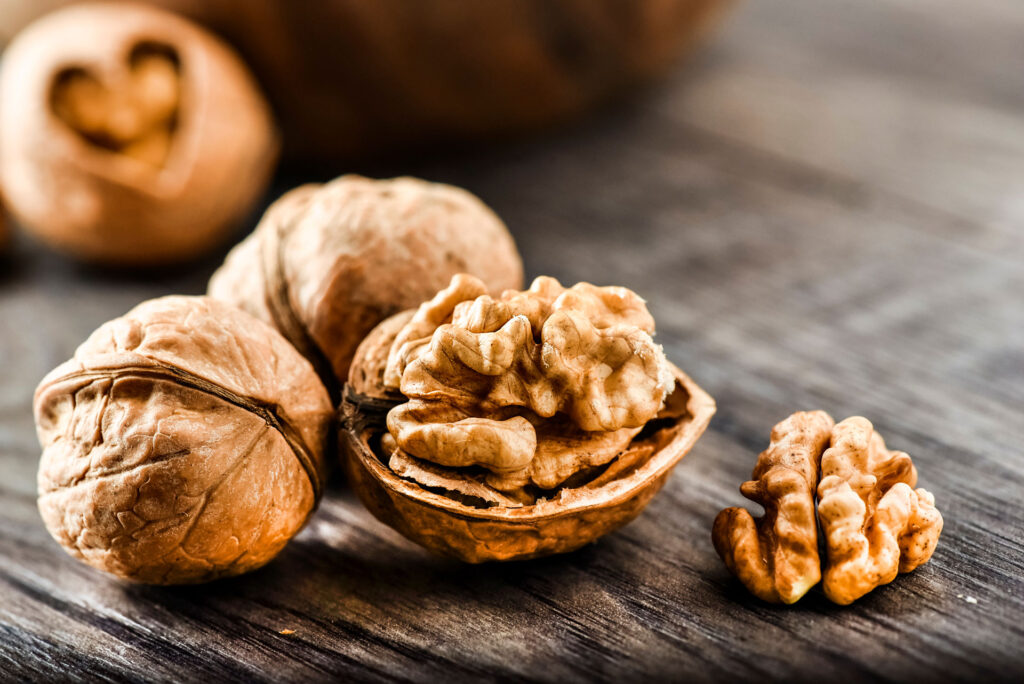
Organic walnuts are rapidly growing out of the ‘niche’ market.
Evidence is in the number of retail online outlets for organic walnuts and the increase in production over the past six years.
Mike Poindexter of the vertically integrated Poindexter Nut Company in Selma, Calif. said that domestic production of organically grown walnuts has ramped up to surpass foreign imports and pricing has reached more consumer-friendly levels.
Supply of organic walnuts has increased greatly over the past several years, Poindexter said. In 2015, 4,424 tons of organic walnuts were produced. By 2019, production had increased to 10,055 tons. However, he said current data is hard to come by and there is no information on the size of the 2020 organic walnut crop, which has made figuring out pricing levels a bit tricky.
Putting it into perspective, however, Poindexter’s total walnut output is two and a half times larger than California’s entire organic walnut crop.
Poindexter attributed the increase in organic walnut production to existing orchards being transitioned to organic and increased production numbers per acre due to higher yielding varieties. Irrigation and nutrients are important components in organic farming practices, he noted, but neither of those are new developments in walnut farming.
Pricing Premium, Higher Costs
Water costs and debt service make up a large part of the cost structure. Poindexter said that typically, higher yielding walnut varieties would have a drop in production due to the inefficiencies of organic fertilizers compared to synthetics. Other farming costs, including weed control, for example, also tend to be higher in organic production. In order to achieve comparable returns on a per acre basis, he said there needs to be a 30% premium per pound on average.
“We have seen substantially higher premiums in years past, but I expect the normal bump on pricing will be much closer to 30% to 40% over conventional pricing moving forward.”
Poindexter said that ideal locations for organic production would be areas with lower insect pressure and without close proximity to conventional farms to eliminate the need for a buffer zone to account for drift of pesticide applications. Because of the difficulty in overcoming deficiencies in the soils, starting in good walnut ground, class 1 soils with good water penetration, would be ideal. Poindexter sources organic walnuts from growers in the San Joaquin Valley and in the Paso Robles area.
He said that in the past, there have been many walnut orchards that were no longer economically viable under conventional methods and were converted to organic to stretch the productive life of the orchard. With the recent rise in supply of organic walnuts, Poindexter said that older orchards or those with lower yielding varieties are again getting pushed into negative margins. The market won’t pay the premium necessary for older varieties that do not have production or the crop quality. Color is the main quality driver for sales and pricing.
“If a grower wants to farm organically, they should be farming one of the newer varieties: Chandler, Ivanhoe, Tulare, Howard or Solano,” Poindexter said.
Visual aspects are very important as the largest segment of consumption for organic walnuts is in retail sales for culinary use. Institutional baking and ingredient use of organics is still a very small part of the market, Poindexter explained, so the older varieties are going to struggle to find a market amid the expanding supply of premium varietals.
Finding a Home
Lake County has historically led the way in acres of organically grown walnuts in California. UCCE Farm Advisor Rachel Elkins said that 2018 statistics show the county had 1,700 acres producing organic walnuts. San Luis Obispo County listed 650 acres, San Benito County listed 564 acres and the Solano/Yolo counties combined listed nearly 2,000 acres.
Many growers of organic walnuts in Lake County are now struggling, Elkins said, with the loss of a major huller/dryer and marketer for their nuts. Two dry winters have also stressed the trees and made them more vulnerable to freezing temperatures. Many walnut orchards in Lake County are also older varieties, she said.
“There is a short crop here this year, and the big issue is finding a home for those walnuts,” Elkins said.
Grower Challenges
The Fillmore family in Gridley, Calif. is a certified organic walnut grower and processor. Ryan Fillmore said growers who choose to farm organically have a different set of challenges compared to conventional walnut growers.
“Those challenges are manageable, but you have to think ahead.”
Fillmore said the goal with organic production is to find ways to use the tools you have.
Insect pests, nutrition and orchard floor maintenance are the three main challenges.
Organic walnut growers look to soil health for production and integrating mechanical weed control into their systems. Trees that are farmed well produce pretty good yields, Fillmore said.
Fillmore said the family focuses on soil health in their orchards, encouraging the growth of beneficial soil microbes that produce nutrients for sustainable crop production.
Transitioning young trees to organic production is a common practice, but he said that production can begin to taper off after a few years unless growers recognize the importance of soil health in providing for tree nutritional needs.
Navel orangeworm (NOW), codling moth and husk fly are the main insect pests, but Fillmore said there are a couple of positives about the organic approach. Not using broad-spectrum insecticides leads to a higher population of beneficial insects. Fillmore Farms also utilizes bat houses to provide habitat for bat colonies that can help reduce insect populations in orchards.
For husk fly control, Fillmore said timing is important for efficacy of a spinosad-based treatment. Treatments at $60 to $150 per acre are expensive and provide less benefit if timing is off even a day or two.

Codling moth can be treated with BT, but each treatment is only effective for a few days. Fillmore said codling moth damage is not as immediately obvious on the processing side, but CM attacks the hull of the immature walnut, providing an opening for NOW.
Orchard sanitation, mating disruption and trapping are Fillmore’s strategies for NOW control. This pest is the toughest challenge in organic walnut production. He noted that Peterson traps have been an effective tool to remove female NOW from the orchard but added that any moderate to severe NOW problem will require more than one approach to control in an organic setting. There currently are no organic sprays that effectively control NOW.
“NOW is a little like Bermuda grass,” Fillmore said. “If you let it get a start in the orchard, it is much harder to control later on.”
When it comes to weed control, Fillmore said modified mowers that work closely around tree trunks are used rather than herbicides. Choosing to mow weeds rather than use herbicides also removes herbicide resistance from the list of grower concerns.










